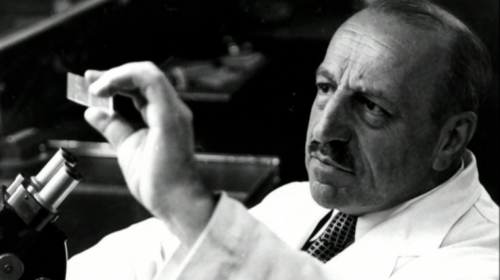George Papanicolaou: Cytopathology, Cancer
If Dr. George Papanicolaou isn’t considered with our list of the top 50 influential physicians of all time; then, who is?
I must confess that I must have said the words “Pap test” thousands of times in my training without once thinking about the man whose name those words were associated with.
Dr. George Nicholas Papanicolaou, inventor of the “pap smear” test for cervical cancer
Obsessively dedicated physician, gifted scientist, meticulous researcher, respected teacher—all labels given the man by colleagues, students and patients; but, nothing speaks of his life achievement more than the “pap smear,” the test which revolutionized the care of women’s cancer.
George Papanicolaou (1883-1962) – #36
PAP Smear and Early Cancer Detection
The study of science and medicine in Greece goes back as far as the history of medicine and was the home, in the late 1800s, of Nikolas and Maria Papanicolaou a physician on the island of Euboea, Greece.
Early Life and Education of George Papanicolaou
George Nicholas Papanicolaou was born on May 13, 1883, the third child of the couple who raised him and his two sisters in the small town of Kymi where he served as physician. Recognizing a sharp mind in their son, the Papanicolaou’s sent him for an education in Athens where he studied literature, philosophy, languages and music.
His father “urged” him to enter medicine and George earned his medical degree in 1904, the year he was conscripted for two years into the army, but enabling him admission to the academy for reserve officers.
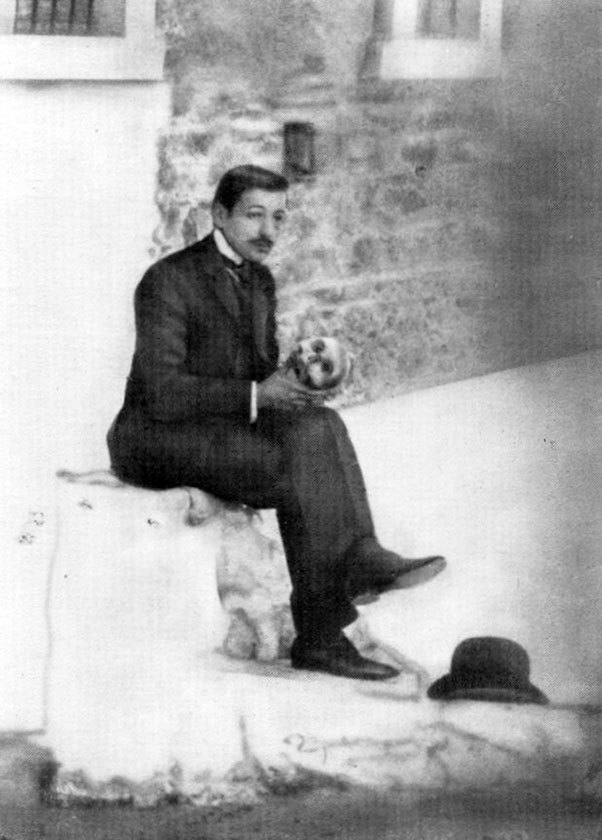
In 1906 he didn’t want either of the two options open to him (career in military or practice medicine in Kymi) so convinced his father to pay for more education in Jena, Germany under Ernest Haeckel (evolutionist) and August Weismann (geneticist)—obtaining a PhD in 1910 for thesis: “Sex differentiation of the daphnia.”
Faced, yet again, with a decision about “what to be,” he took a ferry boat ride home to begin an academic career in biologic research meeting Andromache (Mary) Mavroyeni and falling in love—they were married on Sep 25, 1910.
The position he finally found and accepted was as the physiologist for a scientific expedition on an oceanographic research vessel sponsored by the Oceanographic Museum of Monaco and the Prince of Monaco.
When his mother died in 1912, he returned to Greece and served as an army physician during the Balkan War. American volunteers told him about the many career opportunities in the US, which is where he immigrated in 1913, arriving in New York City where he and Mary took employment at Gimbel’s department store—the only employment they could find.
George did eventually find a position in a hospital laboratory and by 1914 was working at Cornell Medical College in the anatomy department—where, also, he was eventually able to bring his wife Mary to work as his assistant.
Career:
At Cornell for 45 years, he developed a method for studying exfoliated epithelial cells and did work which established the field of modern diagnostic cytology. Doing research where he needed to catch a guinea pig at a precise time in it’s menstrual cycle he realized nobody had ever written about it before!
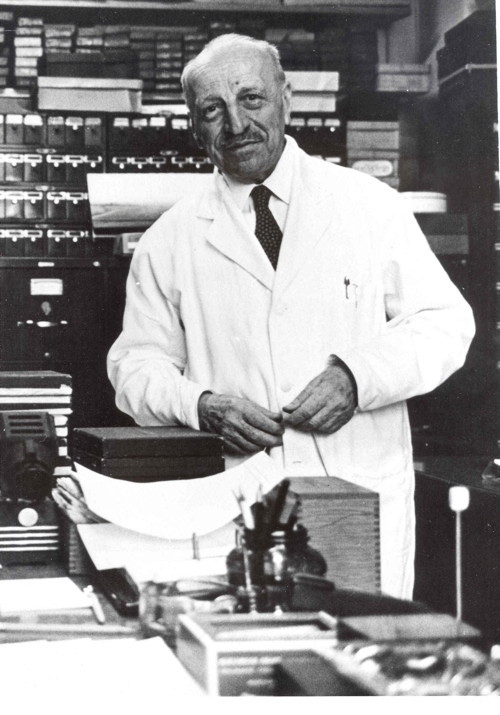
He needed to avoid wasting animals by killing them at the wrong time so he did the meticulous studies and invented a method of doing it. Lo and behold, he discovered that the sloughed cervical cells did reveal the menstrual cycle as well as cancer cells when they were there. He wrote about it in 1917.
He subsequently researched the human female menstrual cycle cytology and used his techniques to examine cells for cancer in 1925; he then presented and published about the same thing in humans in 1928—to a skeptical audience of surgeons. That year he also became a US Citizen and was promoted to Assistant Professor.
A British researcher had shown that cancer cells could be identified in lung cancer back in the early 1800s. Another Romanian researcher (Aurel Babeş) independently developed a different method for examining cervical cancer and presented it in Romania in January 1927—later published in France in April 1928.
Neither of them apparently knew about the other’s work and although Babes beat Papanicolaou in publication, the “Pap smear” (a completely different method) was already being used in the US two years before Babes presented his technique.
George collaborated on a clinical study which required all women admitted to the gyn service of the New York Hospital to have a “pap smear”—merely to validate the diagnostic potential of the test. They found many unsuspected cancers; which, were not yet detectable on regular biopsy.
The study was published in 1943 and it wasn’t until then that the “pap test” became accepted—the mortality rate from cervical cancer dropped over 70%! In 1945 they published the full study of over 3,000 cases and the “Pap test” became the “gold standard” of cervical cancer diagnostic tests.
Later life:
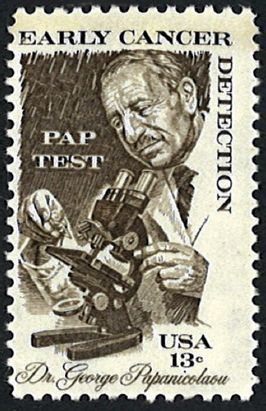
In 1951 he became an Emeritus Professor at Cornell Medical College. Still, in 1954 he published the “Atlas of Exfoliative Cytology,” a comprehensive work that featured his observations and became the standard text in the field.
Two laboratories bear his name at Cornell; he authored four books and over 150 articles; he was nominated for the Nobel Prize in Physiology and Medicine; and, was awarded the United Nations Prize in 1962.
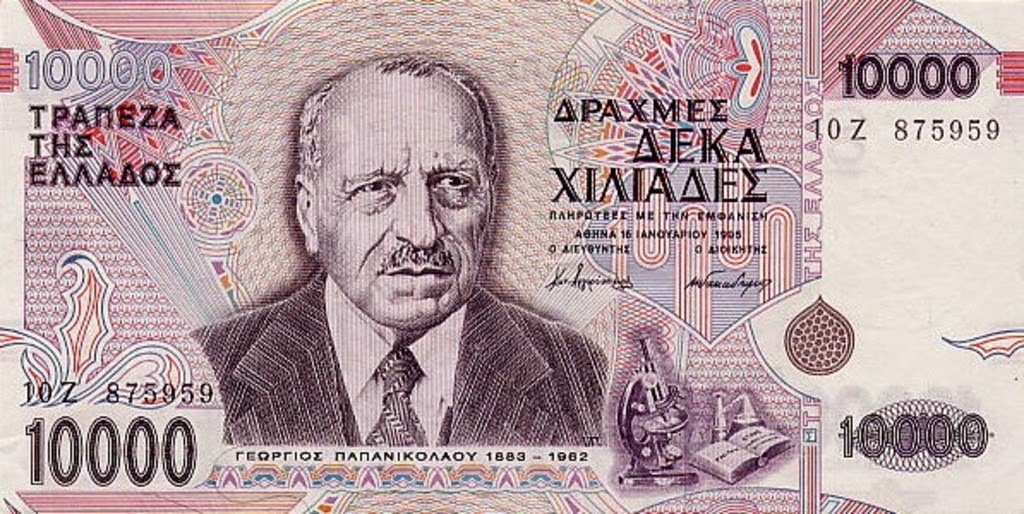
Three nations have dedicated postage stamps in his honor, including the U.S. and Greece, and his image was featured on the Greek 10,000-drachma currency note. He was given the prestigious Albert Lasker Award for Clinical Medical Research from the American Public Health Association (1950) and the Medal of Honor from the American Cancer Society (1952).
In 1961, George was named director of the Cancer Research Institute of Miami and moved there with his wife Mary. By January 1962 research had begun but unfortunately he suffered a heart attack in February and died, three months after moving to Miami. He was 78. The institute was renamed the Papanicolaou Cancer Research Institute in his honor.
Biographic Summary
George Papanicolaou was a cytopathologist to invented the PAP smear
Born: 13 May 1883; Kymi, Euboea, Greece
Died: 19 Feb 1962 (78); Miami, Florida
Education: M.D. 1904 Greece; PhD 1910 Germany
Known for: Early detection of uterine cancer by inventing what was eventually known as the PAP Smear
Books: Four books and over 150 articles
Parents: Nikolas and Maria Papanicolaou
25 Posts in Top 50 Doctors (top50) Series
- 27 - Charles D. Kelman - Cataracts – 9 Mar 2023
- 28 - Cicely D. Williams, Kwashiorkor, Breastfeeding, Whistleblower – 21 Jun 2022
- 29 - Dame Cicely Saunders, Hospice – 23 Apr 2018
- 30 - David L. Sackett, Evidence-based Medicine – 2 Apr 2018
- 31 - E. Donnall Thomas & Joseph Murray, Bone Marrow Transplants – 23 Feb 2018
- 32 - Elizabeth Blackwell, women in medicine – 29 Jan 2018
- 33 - Elisabeth Kübler-Ross, stages of grief – 5 Jan 2018
- 34 - Watson & Crick, DNA – 2 Dec 2017
- 35 - Mahmut Gazi Yaşargil, Micro-Surgery – 24 Oct 2017
- 36 - George Papanicolaou, Cytopathology, Cancer – 29 Sep 2017
- 37 - Dr. James Parkinson, Parkinson's Disease – 1 Sep 2017
- 38 - Dr. John Snow, cholera – 20 Aug 2017
- 39 - Dr. Joseph Kirsner, GI Joe – 27 Jul 2017
- 40 - Lawrence (Larry) Einhorn, chemotherapy – 16 Jun 2017
- 41 - Robert Koch, modern bacteriology – 21 Mar 2017
- 42 - Stanley Dudrick, TPN – 28 Feb 2017
- 43 - Stanley Prusiner, neurodegenerative diseases – 25 Jan 2017
- 44 - Victor McKusick, medical genetics – 3 Jan 2017
- 45 - Virginia Apgar, anesthesiology & newborn care – 12 Nov 2016
- 46 - William Harvey, circulation – 12 Oct 2016
- 47 - Zora Janžekovič, burns – 26 Sep 2016
- 48 - Helen Taussig, blue babies – 3 Sep 2016
- 49 - Henry Gray, anatomy – 3 Jul 2016
- 50 - Nikolay Pirogov, field surgery – 11 Jun 2016
- Top 50 Doctors: Intro/Index – 10 Jun 2016
Advertisement by Google
(sorry, only few pages have ads)

